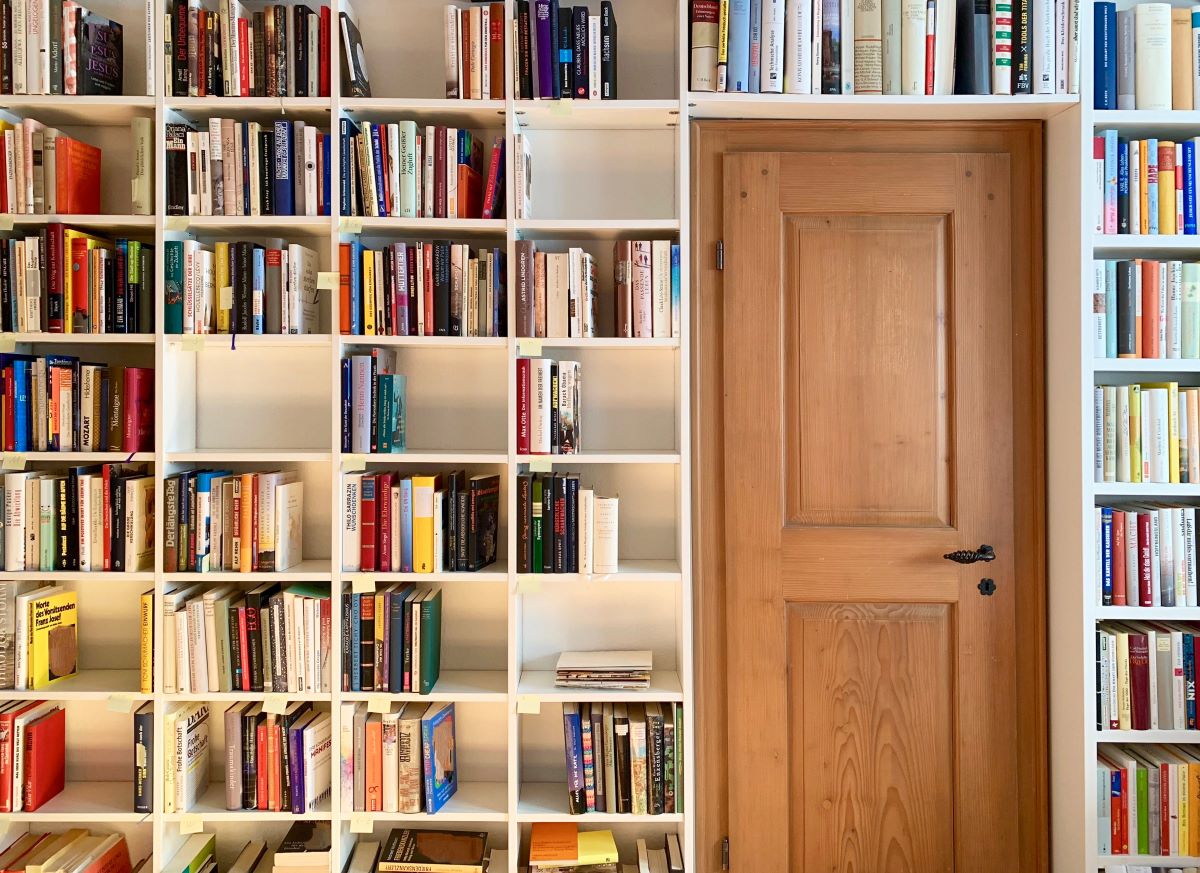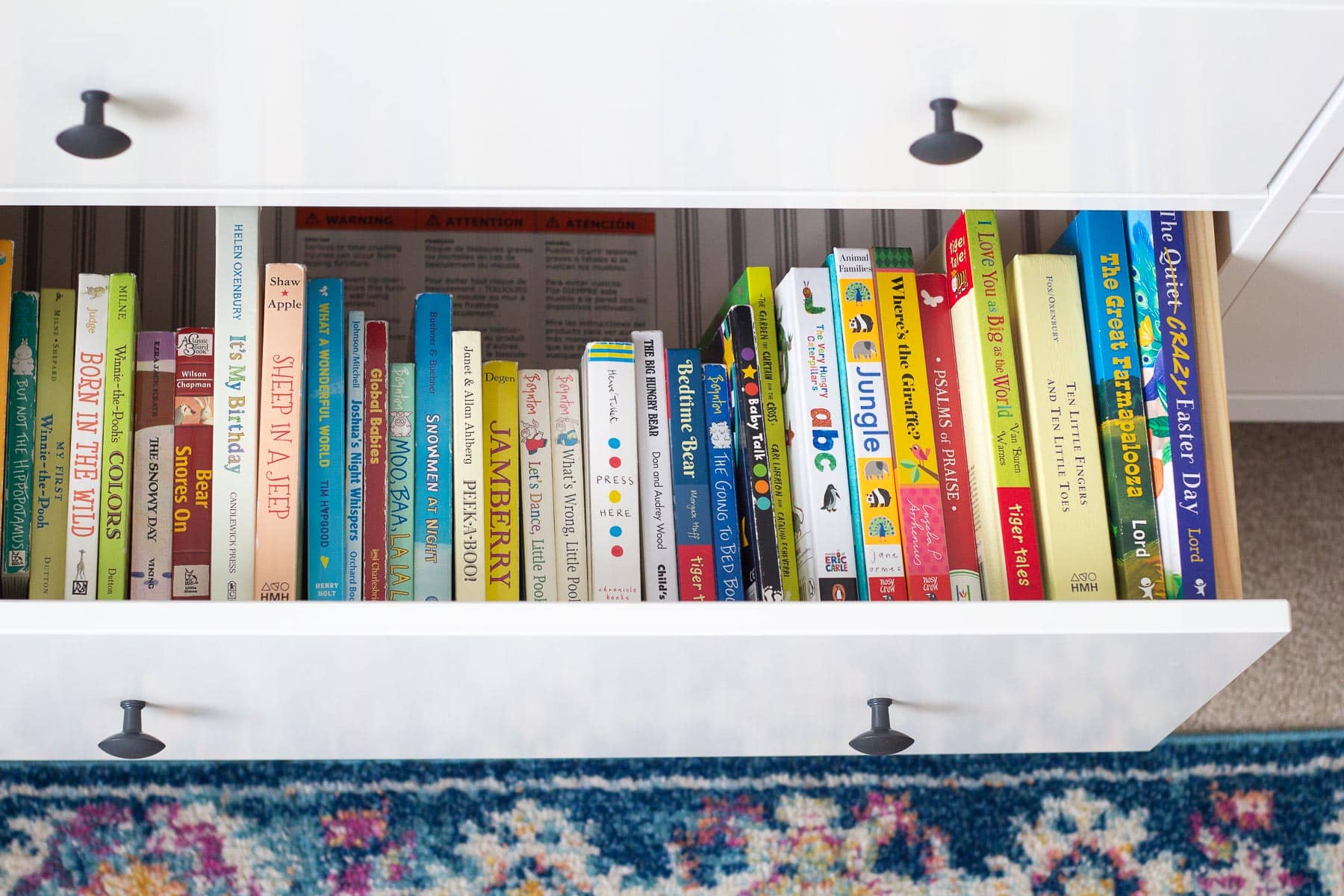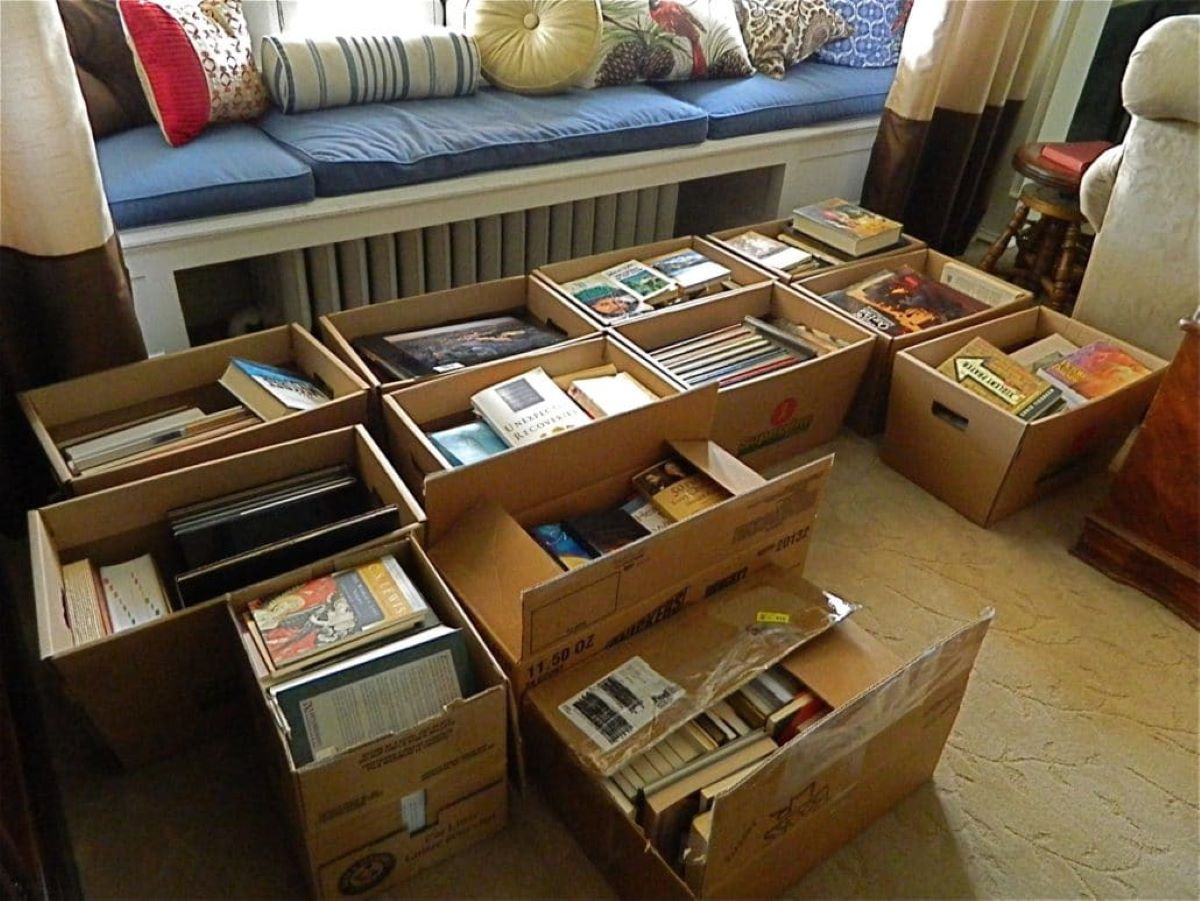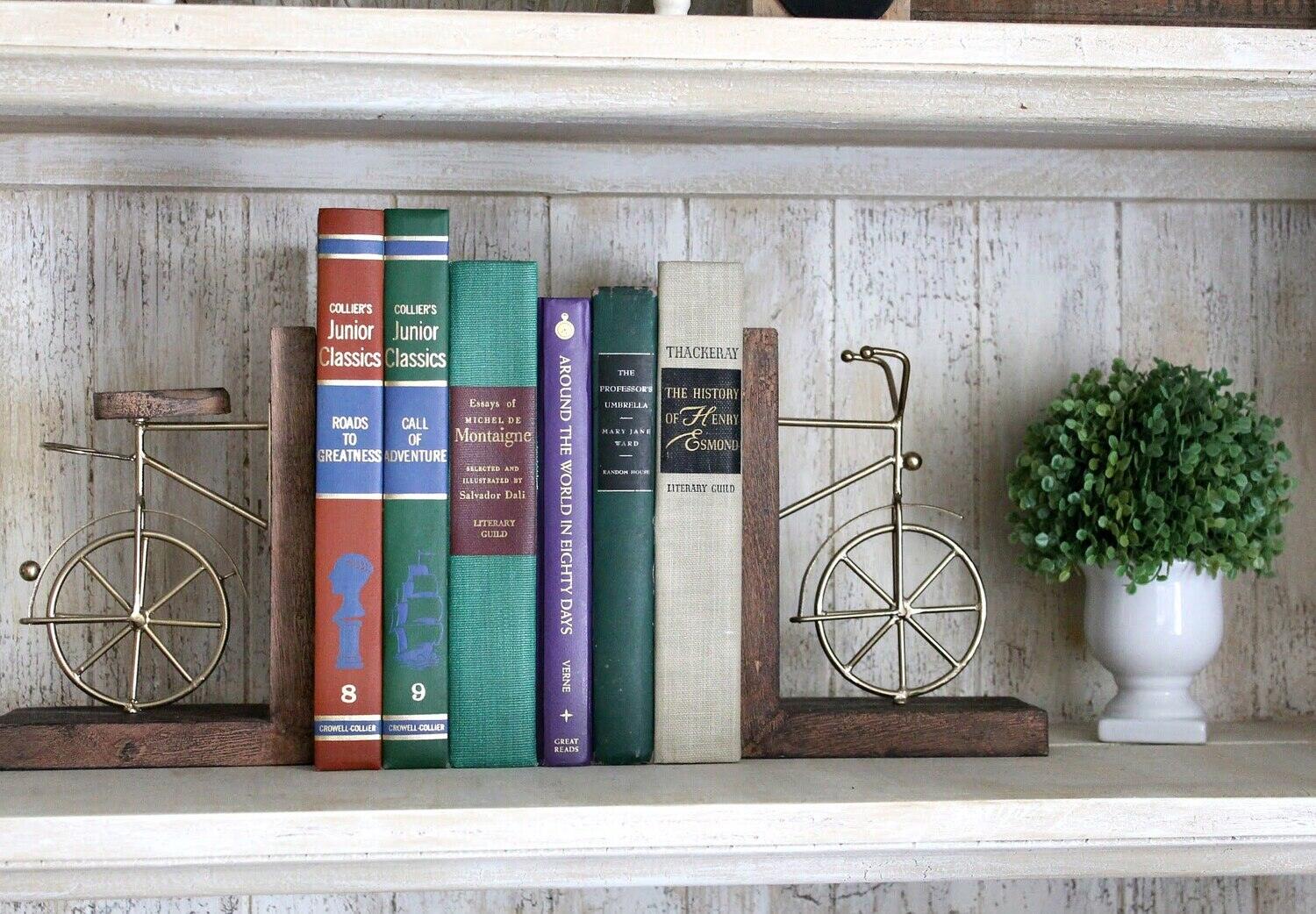

Articles
How To Store Books In Storage
Modified: March 18, 2024
Learn the best way to store articles and books in storage to keep them in perfect condition. Expert tips and guidance to protect your valuable collection.
(Many of the links in this article redirect to a specific reviewed product. Your purchase of these products through affiliate links helps to generate commission for Storables.com, at no extra cost. Learn more)
Introduction
Books are not just a source of knowledge and entertainment; they often hold sentimental value and are treasured possessions. However, circumstances may arise where we need to store our beloved books away, such as during a move, renovation, or simply to create more space in our homes.
Properly storing books is essential to preserve their condition and prevent damage. This article will guide you on how to store books in storage to ensure they remain in excellent condition until you’re ready to bring them back into your personal library.
From selecting the right storage space to organizing your books within it, we will cover all the necessary steps to keep your books safe and well-maintained. Let’s delve into the details!
Key Takeaways:
- Properly storing books in storage is crucial for preservation. Select the right space, prepare books, choose appropriate containers, and maintain climate control to ensure their longevity.
- Take measures to prevent damage and pests, label and organize effectively, and regularly maintain your book collection in storage for future enjoyment.
Read more: How To Store Books In Bedroom
Selecting the Right Storage Space
When choosing a storage space for your books, it’s important to consider several factors to ensure the optimal conditions for preserving them. Here are some key considerations:
- Climate Control: Books are sensitive to extreme temperatures and fluctuations in humidity. Look for a storage facility that offers climate control to maintain a stable temperature and humidity level, ideally between 60-75 degrees Fahrenheit and 40-50% relative humidity.
- Cleanliness: Ensure that the storage facility is clean and free from moisture, dust, and pests. A clean environment will protect your books from potential damage and prevent insects or rodents from infesting your collection.
- Security: Check the security measures in place, such as surveillance cameras, secure access, and individual unit alarms. You want your books to be safe and protected while in storage.
- Accessibility: Consider how often you may need to access your stored books. If you anticipate needing frequent access, choose a storage unit that allows easy and convenient entry.
- Size: Assess the size of your book collection to determine the appropriate storage unit. Consider not only the current number of books but also potential growth in your collection. It’s better to opt for a slightly larger storage space to accommodate future additions.
By choosing the right storage space, you’ll create an ideal environment for your books, ensuring their preservation and protection during their time in storage.
Preparing Your Books for Storage
Before packing your books for storage, it’s essential to prepare them properly. This will help protect them from damage and ensure their longevity. Here are some steps to follow when preparing your books for storage:
- Clean your books: Dust each book carefully using a soft brush or a clean, lint-free cloth. This will help remove any dirt or debris that may have accumulated on the covers or pages. Make sure to clean both the exterior and interior of each book.
- Inspect for damage: Take the time to examine each book for any existing damage, such as torn pages, loose bindings, or water stains. Make note of any issues and consider repairing them before storing the book to prevent further deterioration.
- Avoid using tape: While it may be tempting to use tape to repair damaged pages or bindings, it is not recommended. Tape can cause more harm than good by leaving sticky residue or damaging the paper or binding. Instead, seek professional book repair services if necessary.
- Remove bookmarks or inserts: Remove any bookmarks, paper clips, or other inserts from between the pages of your books. These items can cause indentations or scratches if left in place during storage.
- Protect fragile items: If you have particularly fragile or valuable books, consider wrapping them in acid-free tissue paper or placing them in archival-quality sleeves or plastic covers. This extra layer of protection will shield them from dust and potential scratches.
- Photograph valuable books: If you have valuable or rare books, document their condition by taking photographs. This will serve as a reference in case of any damage or loss during storage.
By taking the time to properly prepare your books for storage, you’ll minimize the risk of damage and ensure that they remain in good condition throughout their time in storage.
Choosing Appropriate Storage Containers
When it comes to storing your books, selecting the right containers is crucial to ensure their protection and preservation. Here are some factors to consider when choosing storage containers for your books:
- Sturdy materials: Opt for storage containers made from sturdy, acid-free materials such as plastic or cardboard. Avoid containers that may emit harmful fumes or chemicals that can deteriorate the condition of your books.
- Size and shape: Select containers that are appropriately sized and shaped to accommodate your books without causing strain or damage. Avoid overstuffing containers, as this can lead to bent pages or warped covers.
- Non-transparent: Choose containers that are non-transparent or have opaque sides. This will protect your books from exposure to light, which can cause fading and discoloration over time.
- Tight-fitting lids: Ensure that the containers have tight-fitting lids to keep out dust, pests, and moisture. This will create a secure environment for your books and minimize the risk of damage.
- Handles for easy transport: If you anticipate needing to move your books or access them frequently, consider containers with handles for easy transportation. This will make it more convenient to retrieve or rearrange your stored books.
- Labeling: Choose containers that allow for labeling. Clearly mark each container with its contents or create an inventory list to easily locate specific books when needed.
- Stackability: If space is limited, opt for containers that are designed to stack securely. This will maximize the use of vertical space in your storage area.
Remember to pack your books upright, lining them up vertically like you would on a bookshelf. This will prevent unnecessary stress on the spines and help maintain the books’ structural integrity.
By carefully selecting appropriate storage containers, you’ll create a safe and organized environment for your books in storage, ensuring their long-term preservation.
Arranging Books in Storage
Once you’ve prepared your books and chosen the right storage containers, it’s time to arrange them in your storage space. Proper organization and arrangement will not only make it easier to locate specific books but also help maintain their condition. Follow these tips to effectively arrange your books in storage:
- Categorize your books: Sort your books into categories that make sense to you, such as genre, author, or topic. This will help you locate specific books more easily when you need them.
- Create a shelving system: If possible, invest in sturdy bookshelves or bookcases to house your storage containers. This will provide the books with additional support and prevent them from being stacked directly on top of each other.
- Organize by size: Group books of similar sizes together to prevent smaller books from getting lost or damaged between larger ones. This will also help optimize the use of space within your storage containers.
- Leave some space: Allow for some breathing room between each storage container to promote air circulation and minimize the risk of damage caused by excessive pressure or humidity buildup.
- Avoid overcrowding: Resist the temptation to cram too many books into each storage container. Overcrowding can lead to damage, such as bent pages or warped book covers. If you run out of space, consider acquiring additional storage containers to maintain proper book arrangement.
- Utilize bookends: Place bookends or dividers within each storage container to help keep books upright and prevent them from leaning or falling over. This will help maintain the shape and alignment of the books.
- Consider accessibility: If you anticipate needing frequent access to certain books, make sure to place them within easy reach, either at the front of the storage containers or on shelves at a convenient height.
Remember to handle your books with clean and dry hands while arranging them to avoid transferring any dirt or oils onto the pages. Regularly check on your books in storage to ensure they remain in good condition and make any necessary adjustments or reorganization as needed.
By organizing and arranging your books thoughtfully, you’ll create a well-structured and accessible storage system that preserves their condition and allows for easy retrieval when needed.
Read more: How To Store Books Without A Bookshelf
Climate Control Considerations
When storing your books, it’s important to take climate control into consideration. Fluctuations in temperature and humidity can have a significant impact on the condition of your books over time. Here are some climate control considerations to keep in mind when storing your books:
- Temperature: Extreme temperature fluctuations can cause damage to your books, including warping, mold growth, and deterioration of the paper. Aim to store your books in a space with a consistent temperature, ideally between 60-75 degrees Fahrenheit.
- Humidity: High humidity can lead to mold, mildew, and deterioration of the paper, while low humidity can cause the pages to become brittle and prone to damage. Aim for a relative humidity level of 40-50% to maintain the optimal condition of your books.
- Dehumidifiers: If you live in an area with high humidity levels, consider using dehumidifiers in your storage space to help regulate the moisture levels. This will minimize the risk of mold growth and protect your books from humidity-related damage.
- Air circulation: Proper air circulation within your storage space is essential to prevent stagnant air and maintain a stable environment. Avoid tightly sealing your storage containers to allow for some airflow and minimize the risk of moisture buildup.
- Ventilation: Ensure that your storage space has adequate ventilation to prevent the accumulation of stale air and promote better air quality. Good ventilation helps to mitigate moisture-related issues that could affect your books.
- Avoid basements and attics: Basements and attics are often prone to temperature and humidity fluctuations, making them less than ideal for book storage. If you must store books in these areas, take extra precautions, such as using climate-controlled containers or adding additional insulation.
- Monitoring: Regularly monitor the temperature and humidity levels in your storage space. You can use a digital thermometer and a hygrometer to keep track of these conditions. If you notice any significant fluctuations, take necessary steps to address the issue and protect your books.
By maintaining a stable climate within your storage space, you’ll help safeguard your books from potential damage caused by temperature and humidity fluctuations over time.
When storing books in storage, make sure to use sturdy boxes or containers to protect them from damage. Store them in a cool, dry place away from direct sunlight to prevent deterioration. Avoid stacking heavy items on top of the books to prevent warping or bending.
Preventing Damage and Pests in Storage
When storing your books, it’s important to take measures to prevent damage and protect them from pests. Here are some tips to help keep your books safe and free from harm during their time in storage:
- Use pest control techniques: Before storing your books, ensure that your storage space is free from pests. Clean the area thoroughly to eliminate any existing pests and consider using pest control methods, such as traps or natural deterrents, to prevent infestations.
- Wrap books in acid-free paper: For added protection against pests and to prevent damage, wrap individual books or groups of books in acid-free paper. This will act as a barrier and reduce the chances of pests infiltrating your collection.
- Avoid storing food or beverages: Keep your storage space free from food and beverages, as they can attract pests such as rodents and insects. Storing food or drinks nearby increases the risk of pests infesting your books.
- Regularly inspect for signs of pests: Conduct periodic inspections of your storage space and books to check for any signs of pest activity, such as droppings, chewed corners, or insect eggs. If you discover any signs of pests, take prompt action to address the issue and protect your books.
- Elevate storage containers: To further prevent pests from accessing your books, elevate your storage containers off the floor. Use pallets or shelves to create a barrier between the books and the ground, reducing the risk of pests infiltrating your collection.
- Avoid using plastic bags: While it may be tempting to place books in plastic bags for extra protection, this can actually trap moisture and promote the growth of mold and mildew. Instead, choose breathable storage containers that allow for airflow while keeping pests out.
- Minimize exposure to light: Prolonged exposure to sunlight and even artificial light can cause fading and discoloration of your books. Store your books in a dark or low-light area to minimize the risk of light damage. If your storage space has windows, consider using light-blocking curtains or blinds.
- Check for leaks: Regularly inspect your storage space for any signs of water leaks or excessive moisture. Addressing leaks promptly will prevent water damage to your books and reduce the risk of mold and mildew growth.
- Don’t stack books too tightly: Avoid stacking your books too tightly in storage containers, as this can cause unnecessary pressure and potential damage. Leave some space between books to allow for air circulation and minimize the risk of bent pages or warped covers.
By taking preventative measures and staying vigilant, you can protect your books from damage and keep them safe from potential pests during their time in storage.
Labeling and Organization
Proper labeling and organization are essential for efficiently managing your book storage and easily locating specific titles when needed. Here are some tips to help you label and organize your books effectively:
- Create an inventory list: Develop an inventory list or catalog of all the books you have in storage. Include important details such as title, author, genre, and box or shelf location. This digital or physical record will serve as a reference and make it easier to find specific books.
- Use clear and descriptive labels: Clearly label each storage container with the appropriate information, such as genre, author, or box number. Use labels that are easy to read and durable to withstand the storage environment.
- Group similar categories together: Organize your storage containers in a logical manner, grouping books of similar categories or genres together. This will make it easier to navigate and retrieve books based on specific themes or interests.
- Avoid overpacking: Ensure that each storage container is not overpacked to the point where it becomes difficult to access specific books. Leave enough space for easy retrieval and maintain the structural integrity of your books.
- Consider alphabetizing: If you have a large collection, alphabetizing your books by author’s last name can be a helpful organization method. This allows for quick and easy locating of specific authors or books.
- Use color-coded labels or stickers: Consider using color-coded labels or stickers to further categorize your books based on themes, genres, or any other system that makes sense to you. This visual cue can be a useful way to quickly identify different categories within your collection.
- Maintain a master list: Keep a master list that corresponds to the inventory list mentioned earlier. This includes a comprehensive record of all the storage containers, their contents, and their corresponding locations. Update this list whenever you add or remove books from storage.
- Create a map or diagram: If you have multiple storage containers or shelves, create a map or diagram to visually represent the layout of your storage area. This can help you easily locate specific books and maintain an organized system.
- Review and update regularly: Regularly review and update your labeling and organization system. As your collection grows or changes, make adjustments to ensure that it remains efficient and reflects the current state of your book storage.
By implementing a thoughtful labeling and organization system, you’ll be able to easily find and retrieve books from your storage space, saving time and maintaining an orderly collection.
Maintaining Your Book Collection in Storage
While your books are in storage, it’s crucial to take steps to maintain their condition and ensure their longevity. Here are some tips to help you properly care for and preserve your book collection while in storage:
- Regularly inspect your books: Visit your storage space periodically to inspect your books for any signs of damage, such as pests, mold, or water damage. Catching issues early can help prevent further deterioration and allow for prompt action to be taken.
- Monitor temperature and humidity: Continuously monitor the temperature and humidity levels in your storage space. Fluctuations in these conditions can lead to damage such as warping, mold growth, or brittle pages. Make any necessary adjustments to maintain an optimal environment for your books.
- Rotate your books: To ensure even exposure to air and reduce the risk of damage, rotate your books periodically by moving those at the front to the back and vice versa. This helps prevent pages from sticking together or becoming warped due to prolonged pressure.
- Avoid sunlight exposure: If your storage space has windows, ensure that the books are not directly exposed to sunlight. Ultraviolet (UV) rays can cause fading and discoloration of book covers and pages. Consider using light-blocking curtains or blinds to protect your books from harmful sunlight.
- Handle books with care: When accessing or rearranging your books, handle them with clean and dry hands to avoid transferring oils or dirt. Avoid pulling books from the top of the spine, as this can cause stress and damage. Instead, gently push the adjacent books to create a gap and remove the desired book without excessive force.
- Maintain security measures: Keep your storage space secure to prevent unauthorized access and potential damage to your book collection. Ensure that locks are in good working condition and limit access to trusted individuals.
- Keep pests at bay: Regularly check for signs of pests and implement pest control measures as needed. Consider using natural deterrents or professional pest control services to prevent infestation and protect your books.
- Stay organized: Regularly update your inventory list and labeling system to keep track of your books and their locations. Maintaining an organized storage space makes it easier to retrieve specific books without causing unnecessary disturbance to the others.
- Consider additional protection: If your book collection holds significant monetary or sentimental value, consider obtaining insurance coverage for your stored books. Consult with your insurance provider to explore the available options.
- Document your collection: If you have valuable or rare books, consider documenting your collection through photographs or detailed descriptions. This can serve as a reference and assist in the event of loss, damage, or insurance claims.
By following these maintenance tips and regularly tending to your stored books, you’ll ensure that they remain in excellent condition and ready for enjoyment when you retrieve them from storage.
Read more: How To Store Old Books
Frequently Asked Questions (FAQs) about Book Storage
Here are answers to some commonly asked questions regarding storing books:
- Q: How long can books be safely stored?
- Q: Can I store books in my garage?
- Q: Should I keep books in plastic bags?
- Q: Can I store books in cardboard boxes?
- Q: How should I pack books in storage containers?
- Q: Should I wrap books in bubble wrap?
- Q: How often should I check my stored books?
- Q: Can I store books in a self-storage facility?
- Q: Can I stack books on top of each other in storage containers?
- Q: Do I need to label my storage containers?
A: With proper storage conditions, books can be safely stored for many years. However, it’s important to regularly check and maintain the storage environment to ensure the books remain in good condition.
A: Storing books in a garage is not ideal due to potential temperature and humidity fluctuations. Garages are typically exposed to the elements, which can lead to damage such as mold growth or deterioration of the books. It’s best to choose a climate-controlled storage space.
A: It is not recommended to store books in plastic bags as they can trap moisture and promote mold growth. Instead, use acid-free or archival-quality storage containers that allow for proper air circulation.
A: While cardboard boxes can be used for short-term storage, they are not ideal for long-term book storage as they are prone to moisture and pest damage. Opt for sturdy, acid-free plastic containers designed for archival storage.
A: Pack books in an upright position, similar to how they would be arranged on a bookshelf. Use dividers, such as bookends, to keep them standing upright and minimize movement during storage.
A: It is generally not necessary to wrap books in bubble wrap unless they are particularly fragile or valuable. Instead, consider using acid-free tissue paper or archival-quality sleeves for added protection.
A: It’s recommended to check your stored books at least once every six months. This allows you to monitor the condition of the books, address any issues promptly, and make any necessary adjustments to the storage environment.
A: Yes, self-storage facilities can be a suitable option for storing books. Look for facilities that offer climate control, security measures, and clean environments to ensure the preservation of your book collection.
A: It is generally best to avoid stacking books directly on top of each other, as this can lead to excessive pressure and potential damage. Consider using bookends or dividers to keep books in an upright position.
A: Yes, labeling your storage containers is highly recommended. Clear and descriptive labels will make it easier to locate specific books without having to search through multiple containers.
If you have any specific concerns or questions about storing your books, it’s always recommended to consult with a professional in archival storage or a trusted library preservation expert for personalized advice.
Conclusion
Properly storing your books in storage is essential to preserve their condition and ensure their longevity. By following the guidelines outlined in this article, you can protect your cherished book collection and keep it in excellent shape until you’re ready to enjoy it again. Remember the key steps:
- Select the right storage space that offers climate control, cleanliness, security, and accessibility.
- Prepare your books for storage by cleaning them, inspecting for damage, and removing any bookmarks or inserts.
- Choose appropriate storage containers made of sturdy, acid-free materials, with tight-fitting lids and handles for easy transport.
- Arrange your books in storage by categorizing them, creating a shelving system, and organizing by size or alphabetically.
- Consider climate control considerations such as temperature, humidity, air circulation, and ventilation to prevent damage.
- Take measures to prevent damage and pests in storage by using pest control techniques, avoiding food or beverages, and regularly inspecting for signs of infestation.
- Label your storage containers and maintain an organized system with inventory lists, color-coded labels, and maps or diagrams for easy retrieval.
- Maintain your book collection in storage by regularly inspecting and monitoring the condition, handling books with care, and ensuring security measures are in place.
- Address frequently asked questions (FAQs) about book storage to help you make informed decisions and overcome common challenges.
By taking the necessary precautions and implementing proper storage techniques, you can safeguard your books and preserve them for future enjoyment. Remember to periodically check on your stored books and make any necessary adjustments to maintain optimal storage conditions. With a little care and attention, your book collection will remain in excellent condition until you’re ready to dive back into the world of words and stories.
Frequently Asked Questions about How To Store Books In Storage
Was this page helpful?
At Storables.com, we guarantee accurate and reliable information. Our content, validated by Expert Board Contributors, is crafted following stringent Editorial Policies. We're committed to providing you with well-researched, expert-backed insights for all your informational needs.














0 thoughts on “How To Store Books In Storage”